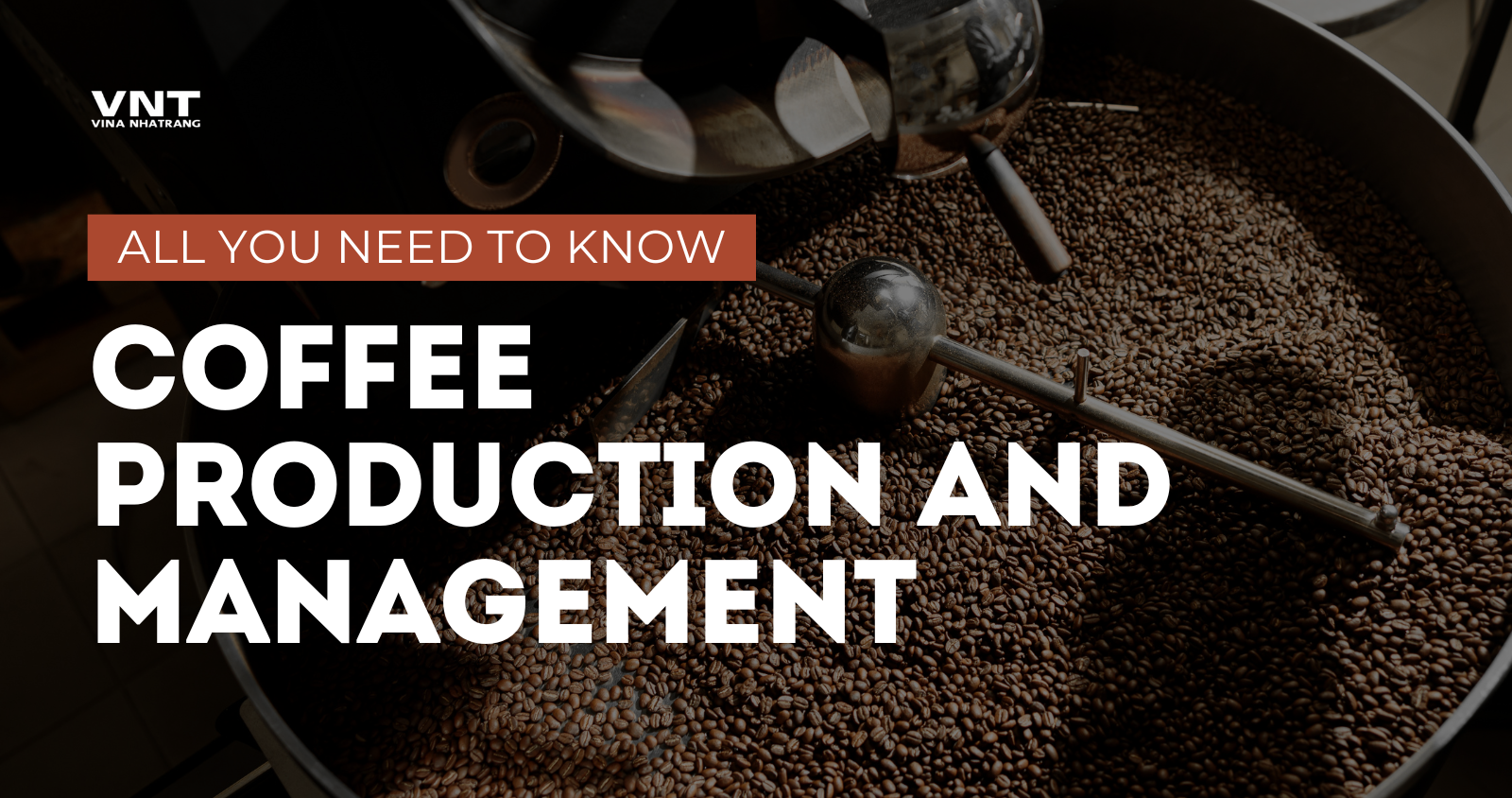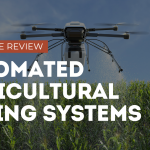The Evolving Landscape of Global Coffee Production
The coffee industry stands at a critical crossroads. While global consumption continues to rise at approximately 2% annually, coffee production faces unprecedented challenges from climate change, market volatility, labor shortages, and evolving consumer preferences. Yet within these challenges lie significant opportunities for forward-thinking coffee producers who implement strategic production and management systems.
Today’s successful coffee operations balance traditional agronomic knowledge with modern management techniques, technological integration, and market-responsive production strategies. The specialty coffee movement has created premium market segments where exceptional quality and unique attributes can command prices 3-5 times higher than commodity coffee. Meanwhile, sustainability certifications provide structured frameworks for environmentally responsible production while often delivering price premiums.
For coffee farm owners, plantation managers, and agricultural consultants, staying ahead requires continuous adaptation and optimization across all aspects of production and management. This comprehensive guide explores best practices for establishing, cultivating, harvesting, processing, and marketing coffee in today’s dynamic global environment.
Farm Establishment and Planning: Foundation for Success
Site Selection: The Critical First Decision
Coffee production success begins with appropriate site selection. Key factors include:
Altitude Considerations:
- Arabica: Ideally 1,000-2,000 meters above sea level
- Robusta: Typically 200-800 meters above sea level
Higher altitudes generally produce denser beans with more complex acidity and flavor profiles but have longer maturation periods and lower yields. Each 100-meter increase in elevation typically delays ripening by about 3-4 days.
Climate Requirements:
- Temperature: Arabica thrives at 18-22°C mean annual temperature; Robusta at 22-26°C
- Rainfall: 1,500-2,000mm annually, ideally distributed throughout the year
- Dry Season: 2-3 month dry period beneficial for flowering stimulation
Soil Characteristics:
- Soil pH: 5.5-6.5 for optimal nutrient availability
- Drainage: Well-drained soils essential to prevent root diseases
- Depth: Minimum 1 meter soil depth for root development
- Organic Matter: Higher levels support microbial activity and water retention
Site analysis should include soil testing, climatic data analysis, and assessment of historical weather patterns, particularly extreme events. Increasingly, climate projection models should be consulted when establishing new plantations, as coffee trees have productive lifespans of 20+ years.
Variety Selection: Balancing Quality, Yield, and Resilience
Variety selection represents a long-term strategic decision balancing multiple factors:
Disease Resistance Considerations:
- Coffee Leaf Rust (Hemileia vastatrix) resistance: Catimor, Sarchimor, and ICAFE90 varieties
- Coffee Berry Disease resistance: Ruiru 11, Batian varieties
- Nematode resistance: Robusta rootstocks for grafted plants
Quality Potential:
- Exceptional cup quality: Gesha/Geisha, SL28, SL34, Bourbon, Typica
- Balanced quality/productivity: Caturra, Catuai, Villa Sarchi, Pacas
Production Characteristics:
- Compact varieties for higher density planting: Caturra, Catuai, Catimor
- Tall varieties requiring more space: Typica, Bourbon, most traditional varieties
Regional adaptability should heavily influence selection decisions. Consultation with local research institutions and observation of successful neighboring farms can provide invaluable insights into variety performance under specific microclimatic conditions.
Farm Layout and Infrastructure Planning
Thoughtful farm layout maximizes operational efficiency while considering environmental factors:
Planting Design:
- Row orientation: North-south orientation maximizes light interception
- Planting density: 1,600-2,500 trees/hectare for unshaded arabica; 1,100-1,600 for shaded
- Block organization: Group varieties with similar management needs
- Access routes: Plan roads for efficient harvest logistics and maintenance
Critical Infrastructure:
- Water systems: Irrigation, processing, and conservation structures
- Processing facilities: Located centrally with access to water and electricity
- Storage facilities: Clean, dry, well-ventilated spaces
- Worker facilities: Housing, sanitation, and gathering spaces
Environmental Management:
- Riparian buffers: 10-30 meter buffer zones along water bodies
- Erosion control: Contour planting, terracing on slopes >15%
- Windbreaks: Protective tree barriers against prevailing winds
Modern farm planning incorporates digital mapping, GIS technologies, and precision agriculture principles to optimize both agronomic conditions and operational efficiency.
Shade Management Approaches
Shade management significantly impacts coffee production sustainability, quality, and yield:
Full-Sun Systems:
- Higher potential yields (often 30-50% higher)
- Earlier production after planting
- Higher input requirements (fertilizer, irrigation)
- Shorter farm lifespan (15-20 years)
- Greater climate vulnerability
Shade-Grown Systems:
- Moderate yields with longer productive lifespan (25+ years)
- Enhanced quality potential through slower maturation
- Natural pest regulation and biodiversity benefits
- Diversification through shade crop income (timber, fruit)
- Greater climate resilience through temperature moderation
Managed Shade Options:
- Regulated shade: 25-30% shade using pruned, managed trees
- Stratified agroforestry: Multiple canopy layers with complementary species
- Temporal shade management: Seasonal pruning timed with coffee phenology
The optimal approach depends on regional climate, elevation, variety selection, and market strategy. Many successful operations implement hybrid systems, using different shade intensities based on microclimate variations within the farm.
Cultivation and Agronomic Practices: Optimizing Production
Soil Management for Coffee Production Excellence
Effective soil management forms the foundation of sustainable coffee production:
Fertility Management:
- Macronutrient needs: N (150-300 kg/ha/year), P (30-60 kg/ha/year), K (150-250 kg/ha/year)
- Critical micronutrients: Boron, zinc, and magnesium particularly important for coffee
- Organic matter: Cover crops, mulching, and compost applications to maintain 3-5% levels
- pH management: Lime applications calibrated to soil analysis results
Application Strategies:
- Split fertilization: 3-4 applications aligned with phenological stages
- Pre-harvest application: Supporting fruit filling and tree recovery
- Post-harvest application: Supporting vegetative recovery and next cycle preparation
- Foliar applications: Targeted micronutrient delivery during critical growth stages
Soil analysis should be conducted annually, with comprehensive nutrient analyses every 2-3 years. Fertilization programs should be adjusted based on soil analysis, tissue sampling, yield targets, and annual removal rates.
Pruning Techniques and Production Management
Pruning directly impacts coffee tree architecture, yield distribution, and long-term productivity:
Pruning Systems:
- Single-stem system: Vertical growth with selective lateral branch management
- Multiple-stem system: 2-4 vertical stems maintained per plant
- Stumping/renovation: Complete rejuvenation pruning every 5-7 years
- Scheduled pruning cycle: Systematic renovation of 20-25% of farm annually
Objectives and Benefits:
- Light penetration optimization
- Air circulation improvement for disease prevention
- Yield concentration on most productive branches
- Harvest efficiency through managed tree height
- Long-term productivity maintenance
Timing pruning operations to coincide with natural tree physiology maximizes effectiveness. In most regions, pruning is best performed shortly after harvest when carbohydrate reserves are sufficient to support recovery growth.
Integrated Pest and Disease Management
Effective pest and disease management requires a systems approach:
Major Coffee Pests:
- Coffee Berry Borer: Trap monitoring, biological control with Beauveria bassiana
- Coffee Leaf Miner: Predator conservation, selective insecticide application
- Nematodes: Resistant varieties, organic matter management
Critical Diseases:
- Coffee Leaf Rust: Resistant varieties, fungicide programs, nutrition management
- Coffee Berry Disease: Copper-based preventative sprays, resistant varieties
- Root Diseases: Drainage improvement, biocontrol agents
Integrated Management Strategies:
- Regular monitoring and early detection systems
- Cultural practices optimizing plant health
- Biological control agent introduction and conservation
- Targeted chemical interventions when thresholds are exceeded
- Post-harvest sanitation to break pest cycles
Documentation of pest and disease incidence, intervention measures, and effectiveness provides valuable data for refining management approaches over time.
Climate Change Adaptation Strategies
Forward-thinking coffee producers implement multiple strategies to mitigate climate risks:
Farm-Level Adaptations:
- Variety diversification: Planting multiple varieties with different climate tolerances
- Shade management: Increased shade to moderate temperature extremes
- Water management: Improved irrigation systems and water harvesting
- Windbreak establishment: Protection against increasingly severe weather events
Production System Adaptations:
- Intercropping: Complementary crops providing income diversification
- Precision agriculture: Targeted interventions based on microclimate data
- Soil carbon building: Increased resilience through organic matter management
- Cover cropping: Soil temperature moderation and erosion prevention
Many successful producers implement climate monitoring systems to track farm-specific trends, allowing for data-driven adaptation strategies tailored to their specific conditions.
Harvest and Post-Harvest Management: Preserving and Enhancing Quality
Harvest Timing and Quality Optimization
Harvest timing significantly impacts coffee quality potential:
Maturity Indicators:
- Color development: Full red/yellow coloration (variety-dependent)
- Brix levels: 15-25% soluble solids in ripe cherries
- Firmness: Slight give under pressure without mushiness
- Floatation test: Less than 5% floaters in water separation
Harvest Planning:
- Selective harvesting: Multiple passes, picking only ripe cherries
- Block-based planning: Harvesting homogeneous ripening blocks
- Labor organization: Trained picking teams with quality incentives
- Collection systems: Avoiding damage through appropriate containers
Maintaining clear records of harvest timing, yield by block, and resulting quality allows producers to refine harvest protocols year over year.
Picking Methods and Quality Implications
Different harvesting approaches create distinct quality outcomes:
Selective Hand Picking:
- Quality advantage: 95%+ ripe cherry selection possible
- Labor requirement: 50-80 kg cherry per person-day
- Quality outcome: Higher percentage of specialty-grade coffee
- Best application: Specialty coffee market focus, uneven ripening conditions
Strip Picking:
- Efficiency advantage: 150-200 kg cherry per person-day
- Quality limitation: Mixed ripeness stages
- Quality outcome: Higher percentage of commercial-grade coffee
- Best application: Commercial coffee production, homogeneous ripening
Mechanical Harvesting:
- Limited application in specialty coffee
- Primarily suitable for flat terrain and uniform ripening
- Quality depends on sophisticated cherry separation systems
- Economic viability generally requires 50+ hectare scale
Many successful operations implement hybrid approaches, applying different harvest methods to different farm sections based on quality potential and market destination.
Processing Methods and Equipment
Coffee processing method selection impacts flavor profile, risk level, and resource requirements:
Washed Processing:
- Flavor profile: Clean, bright acidity, clear varietal expression
- Resource needs: Substantial water (10-20 liters per kg cherry)
- Equipment: Pulpers, fermentation tanks, washing channels
- Quality control points: Fermentation time, washing thoroughness
Natural Processing:
- Flavor profile: Fruit-forward, heavy body, wine-like notes
- Resource needs: Extensive drying space, minimal water
- Equipment: Sorting tables, extensive drying beds
- Quality control points: Initial cherry selection, drying management
Honey/Pulped Natural Processing:
- Flavor profile: Balanced sweetness, medium body, complex acidity
- Resource needs: Moderate water usage, substantial drying space
- Equipment: Pulpers with mucilage control, specialized drying beds
- Quality control points: Mucilage retention level, drying rate management
Equipment selection should align with production volume, water availability, climate conditions, and target market preferences. Many farms implement multiple processing methods to create diverse product offerings.
Quality Control Systems
Systematic quality control creates consistency and continuous improvement:
Field-Level Quality Controls:
- Harvest maturity standards with visual guides
- Cherry receiving inspection protocols
- Initial flotation separation for density sorting
Processing Quality Controls:
- Fermentation monitoring protocols (time, pH, temperature)
- Moisture content monitoring during drying (target: 10-12%)
- Water quality testing for processing operations
Storage and Preparation Controls:
- Moisture stability verification
- Defect analysis and removal protocols
- Sample roasting and cupping evaluation
Cupping Protocols:
- Regular evaluation of production lots
- Standardized scoring systems (SCA 100-point system)
- Flavor profile development and documentation
Digital record-keeping systems linking production data with quality outcomes create powerful feedback loops for management decision-making.
Business Management Aspects of Coffee Production
Labor Management and Workforce Planning
Effective labor management addresses coffee production’s inherent seasonality:
Workforce Structure Options:
- Core permanent team: Year-round employees handling critical operations
- Seasonal teams: Harvest and pruning specialists
- Contractor relationships: Specialized service providers for specific operations
- Community labor pools: Shared labor resources among producer groups
Productivity Optimization:
- Task-based compensation systems with quality incentives
- Clear work standards and training programs
- Ergonomic tools and equipment
- Health and safety protocols
Seasonal Planning:
- Early recruitment and retention strategies for harvest labor
- Housing and transportation logistics
- Staggered planting designs to extend harvest periods
- Mechanization of appropriate tasks to reduce labor dependencies
Progressive producers invest in worker welfare programs, recognizing that quality coffee production depends on skilled, motivated workforces with low turnover rates.
Farm Record-Keeping Systems
Comprehensive record-keeping systems support informed management:
Essential Production Records:
- Block-level yields and quality outcomes
- Input applications (type, rate, timing, method)
- Labor activities and productivity rates
- Pest and disease incidence and interventions
Financial Documentation:
- Cost tracking by operation and production area
- Revenue by coffee quality grade and buyer
- Cash flow management across seasonal operations
- Investment and depreciation schedules
Implementation Options:
- Digital farm management platforms
- Mobile data collection applications
- Integration with certification compliance systems
- GIS-linked management systems
The most valuable record systems balance comprehensiveness with practical usability, ensuring data actually informs management decisions rather than creating administrative burden.
Cost Control Strategies
Effective cost management balances efficiency with quality outcomes:
Fixed Cost Management:
- Equipment sharing arrangements among producer groups
- Right-sizing infrastructure to production scale
- Preventative maintenance programs extending asset life
- Energy efficiency investments (solar drying, water recycling)
Variable Cost Optimization:
- Precision application of inputs based on soil testing
- Integrated pest management reducing chemical interventions
- Selective mechanization of appropriate processes
- Water efficiency systems in processing
Scale-Appropriate Approaches:
- Small farms (under 5 hectares): Labor optimization, shared infrastructure
- Medium farms (5-20 hectares): Focused capital investment, specialization
- Large farms (over 20 hectares): Vertical integration, mechanization
Successful operations continuously evaluate cost structures against quality outcomes, recognizing that lowest-cost production rarely equates to highest profitability in differentiated coffee markets.
Certification Programs and Management Requirements
Major certification programs offer market access and sustainability frameworks:
Organic Certification:
- Management focus: Elimination of synthetic inputs, soil building
- Documentation needs: Complete input records, buffer zones, organic farm plan
- Premium potential: 20-40% above conventional pricing
- Best fit for: Farms already using low-input methods, shade-grown systems
Fair Trade Certification:
- Management focus: Fair labor practices, community investment
- Documentation needs: Financial transparency, democratic governance (cooperatives)
- Premium potential: Fixed premiums above market price
- Best fit for: Cooperative structures, smaller producer groups
Rainforest Alliance/UTZ:
- Management focus: Environmental protection, social responsibility
- Documentation needs: Biodiversity plans, agrochemical management, worker welfare
- Premium potential: 5-15% above conventional pricing
- Best fit for: Larger operations, those seeking environmental credentials
Successful certification implementation requires alignment between farm management systems and certification requirements rather than treating compliance as a separate activity.
Market Access and Value-Addition Strategies
Direct Trade Relationships vs. Traditional Channels
Market channel selection fundamentally impacts profitability:
Traditional Market Channels:
- Local intermediaries/collectors
- Cooperative structures
- Exporters and trading companies
- Auction systems
Direct Trade Development:
- Relationship building with roasters and importers
- Quality-focused production aligned with buyer preferences
- Digital communication and story development
- Sample distribution and quality authentication systems
Hybrid Approaches:
- Quality segmentation across multiple channels
- Relationship development with specialty importers
- Participation in regional producer groups
- Direct marketing of highest-quality microlots
Successful direct trade relationships depend on consistent quality, reliability, transparent communication, and logistical capability.
Positioning for Specialty Markets
Strategic positioning in specialty segments requires multifaceted approaches:
Quality Differentiation:
- Exceptional cup score (85+ points)
- Distinctive flavor attributes
- Processing method specialization
- Microlot separation and identity preservation
Storytelling Elements:
- Farm history and producer background
- Unique production practices
- Environmental initiatives
- Community engagement
Technical Documentation:
- Detailed lot information (variety, elevation, processing)
- Cupping notes and flavor profiles
- Production practice transparency
- Traceability systems
Relationship Development:
- Competition participation
- Origin visit hosting
- Social media engagement
- Industry event participation
The specialty market rewards producers who treat coffee as a distinctive, differentiated product rather than an agricultural commodity.
Vertical Integration Opportunities
Value-addition through vertical integration varies by operation scale:
Small Producer Options:
- Micro-roasting operations
- Local market development
- Agritourism and farm experiences
- Producer group participation for shared resources
Medium-Scale Integration:
- Regional brand development
- Export license acquisition
- Direct export logistics management
- Processing service provision to nearby farms
Larger Operation Possibilities:
- Origin roasting for export markets
- Branded retail product development
- Multi-farm consolidation and marketing
- Integrated café operations at origin
Successful vertical integration requires careful assessment of management capacity, capital requirements, and market development potential.
Case Studies in Successful Coffee Farm Management
Case Study 1: Finca La Esperanza, Colombia – Agronomic Excellence
This 15-hectare farm in Huila, Colombia transformed from commodity production to award-winning specialty coffee through systematic management changes:
Key Interventions:
- Variety diversification (Caturra, Colombia, Gesha, Pink Bourbon)
- Transitional shade system implementation
- Selective harvesting with ripeness incentives
- Lot separation by variety and altitude
- Multiple processing methods creating diverse offerings
Results:
- Cup quality improvement from 78-82 points to consistent 86-90 points
- Price premiums increasing from 10% to 80-120% above commodity
- Direct relationships with 14 specialty roasters across 4 continents
- Carbon sequestration certification generating additional revenue
- Improved climate resilience through diversification
Case Study 2: Kikai Cooperative, Tanzania – Organizational Management
This 1,200-member cooperative transformed through management system innovation:
Key Interventions:
- Implementation of digital member tracking system
- Formation of village-level quality control committees
- Introduction of tiered payment system based on quality
- Installation of central washing station with mechanical drying
- Development of women’s coffee program with separate processing
Results:
- Average quality scores increasing from 82 to 86 points
- Price to farmers increasing by 47% over three years
- Reduction in processing water usage by 60%
- Women’s program achieving 15% price premium
- Retention of 92% of members despite competitor recruitment
Case Study 3: Fazenda São Francisco, Brazil – Technological Integration
This 120-hectare farm in Minas Gerais implemented technology-driven management:
Key Interventions:
- Precision agriculture soil mapping and variable-rate fertilization
- Drone-based monitoring of plant health and irrigation needs
- Mechanical harvesting with optical sorting technology
- Automated drying system with remote monitoring
- Blockchain-based traceability system for buyer transparency
Results:
- 22% reduction in fertilizer usage while maintaining yields
- 35% improvement in harvest labor efficiency
- Energy costs for drying reduced by 40%
- Development of premium mechanized naturals program
- Carbon footprint reduction of 28% per kg of green coffee
Comparison of Coffee Production Management Systems
| Aspect | Traditional System | Technified System | Organic System |
|---|---|---|---|
| Planting Density | 1,000-1,500 trees/ha | 5,000-10,000 trees/ha | 2,000-3,000 trees/ha |
| Shade Management | Natural forest shade | Full sun or minimal shade | Diverse, managed shade |
| Variety Selection | Traditional varieties (Typica, Bourbon) | Compact, high-yield varieties | Disease-resistant traditional varieties |
| Fertilization | Limited or sporadic | Intensive, precisely scheduled | Organic inputs, cover crops |
| Pest Management | Reactive, limited intervention | Preventative chemical program | Biological controls, cultural practices |
| Expected Yield | 600-900 kg green coffee/ha | 1,500-3,000 kg green coffee/ha | 900-1,500 kg green coffee/ha |
| Labor Requirements | Moderate (60-80 person-days/ha/yr) | Lower (40-60 person-days/ha/yr) | Higher (80-120 person-days/ha/yr) |
| Input Costs | Low ($500-900/ha/yr) | High ($1,500-2,500/ha/yr) | Medium ($1,000-1,800/ha/yr) |
| Quality Potential | Variable, can be very high | Consistent commercial quality | Good to excellent |
| Environmental Impact | Moderate, dependent on practices | Higher land and water impacts | Lower, positive biodiversity impact |
| Climate Resilience | Moderate to high | Lower | Higher |
| Production Lifespan | 25-40 years | 15-20 years | 20-30 years |
| Market Premium Potential | Variable | Limited | Significant (20-40%) |
| Best Application | Small farms, difficult terrain, specialty markets | Flat terrain, mechanizable operations, commercial markets | Environmentally sensitive areas, specialty markets |
Conclusion: Integrated Approaches to Coffee Production Management
The most successful coffee operations today recognize that no single production system represents the optimal approach for all circumstances. Rather, effective coffee production and management requires integration of traditional knowledge, modern science, business acumen, and market awareness.
The path forward for coffee production balances multiple considerations: agronomic excellence ensuring productivity, management systems supporting profitability, ecological approaches ensuring sustainability, and quality focus creating differentiation. While challenging, this integrated approach offers the greatest potential for long-term viability in a sector facing significant evolution.
For coffee farm owners, managers, and consultants, continuous learning and adaptation represent the most essential tools in the modern coffee landscape. As climate change, market dynamics, and consumer preferences continue to evolve, so too must the practices and systems that support coffee production around the world.
Coffee Production Management Calendar A comprehensive annual calendar showing key management activities throughout the coffee production year would include:
- December-January: Soil testing, fertilization planning, nursery establishment
- February-March: Pruning operations, shade management, plantation renewal
- April-May: Pre-flowering fertilization, pest monitoring systems establishment
- June-July: Flowering management, initial pest control, irrigation planning
- August-September: Fruit development support, disease prevention
- October-November: Harvest preparation, processing equipment maintenance
- Variable by region: Harvest operations, post-harvest tree care
Key Performance Indicators for Coffee Farm Management Essential metrics for monitoring farm performance include:
- Production metrics: Yield per hectare, yield per tree, cherry-to-green ratio
- Quality metrics: Average cup score, percentage of coffee in each quality tier
- Efficiency metrics: Labor productivity, input use efficiency, water usage per kg
- Financial metrics: Production cost per kg, price realization, gross margin per hectare
- Sustainability metrics: Soil organic matter trends, biodiversity indicators, carbon sequestration




